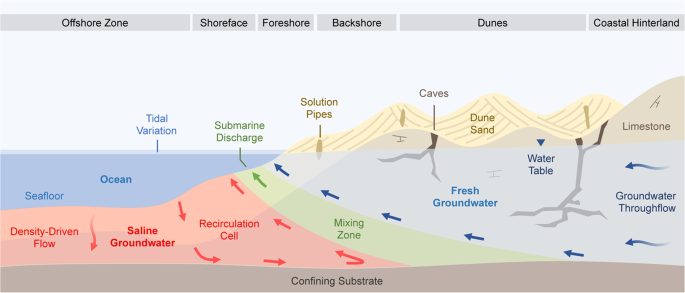
When certain conditions, such as reduced parcel sizes or sensitive features, are met, hydrogeological investigations are required for some subdivision applications. Hydrogeological studies are performed primarily to protect against groundwater and surface water contamination, as well as to restrict mounding of groundwater. Nitrate-nitrogen is transportable in groundwater because it exists as a solution. Furthermore, natural nitrate attenuation through various processes might be restricted and sluggish, and nitrate can stay in the groundwater for a significant length of time.
Phosphorus levels are a problem, as high quantities in surface water can induce algal blooms; this could be caused by onsite systems that feed fertilizers into groundwater, which then feeds surface water. Phosphorus, on the other hand, is more closely associated with soil particles and is less mobile in groundwater than nitrate-nitrogen.
Microbial diseases from humans can contaminate aquifers and groundwater, posing a serious health danger to humans. On-site sanitation systems, sewers, animal excrement, wastewater, or sewage sludge used in agriculture can all cause contamination with fecal coliforms. If separation distances are fulfilled and soil depth is sufficient, fecal coliforms are usually not a problem. The distance these viruses can travel and the amount of time they can remain alive in an aquifer are determined by factors like soil type (particularly porous materials) and the hydrogeology of the aquifer. To déterminer les impacts hydrogeologique, find below the following.
Effects of Hydrogeology
This Guideline seeks to address six key effects.
- Increased nitrate-nitrogen concentrations in groundwater utilized for drinking water
- High nitrate-nitrogen or phosphorus levels in groundwater that feeds discharges to surface water sources
- Subsurface flow transport of effluent containing high amounts of nitrate-nitrogen and/or phosphate to surface water
- An abnormally high level of fecal coliforms in groundwater used for drinking
- Mounding of the groundwater table as a result of a high density or many onsite sewerage systems in a given area
- Virus and protozoa contamination of groundwater
When the following conditions exist, elevated nutrient concentrations in surface water due to groundwater release will be a cause for concern:
- An aquifer that is unconfined, somewhat confined, or perched beneath or near an onsite wastewater system
- Aquifers that are unconfined, somewhat confined, or perched cross the ground level
- The aquifer that is unconfined, somewhat confined, or perched beneath or near an onsite sewerage system
- The aquifer is unconfined, somewhat confined, or perched and is used as a source of drinking water
By establishing an adequate separation between an onsite system and surface water, as well as accounting for local soil type and chemistry, the risk of phosphorous or nitrate contamination of surface water can be reduced.











